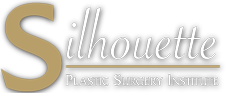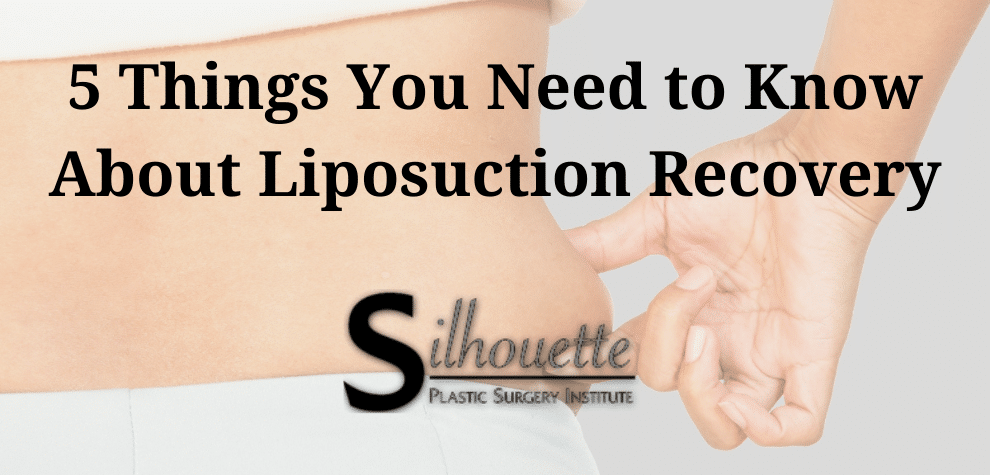Liposuction is a common cosmetic procedure that sucks fat cells out of specific areas of the body such as the stomach, hips, thighs, buttocks, and arms. If you’ve been eating right and exercising regularly but you still have stubborn areas of fat on your body, liposuction may be a good next step for you. However, it’s important to have a solid plan for your liposuction recovery before undergoing the procedure. For more information on whether or not liposuction is right for you, call Silhouette Plastic Surgery Institute today at 949-359-8397.
What Happens During Liposuction?
What happens during liposuction depends on the type of procedure you choose. Generally, you will be sedated with general anesthesia. Then your surgeon will begin sucking out fat cells in the areas that were marked prior to the procedure.
Types of Liposuction
As stated previously, your procedure will differ depending on what kind of liposuction you choose.
- Tumescent Liposuction: this is the most common type of liposuction available. If you choose this type, an Orange County plastic surgeon will inject saline solution (to aid in fat removal), lidocaine (to relieve pain), and epinephrine (to make the blood vessels constrict) into the area that’s being treated. These injections will cause the area to swell and stiffen. Lastly, your surgeon will make small incisions to suck out fat cells with a small tube connected to a vacuum.
- Ultrasound-Assisted Liposuction (UAL): during this type of liposuction, your surgeon will insert a metal rod under your skin that emits ultrasonic energy. The ultrasonic energy essentially breaks down fat cells for easier removal. Because it breaks down fat cells so well, UAL is often used along with tumescent liposuction.
- Laser-Assisted Liposuction (LAL): this type of liposuction uses intense laser light to break down fat cells. LAL can also be used along with tumescent liposuction.
- Power-Assisted Liposuction (PAL): this type of liposuction uses a tube that moves back and forth rapidly. Your surgeon may suggest PAL for large amounts of fat removal because this technique sucks out fat easier, faster, and more precisely.
What Happens After Liposuction?
Most patients experience bruising, redness, and swelling immediately after their procedure. Because of this, your surgeon may prescribe pain medicine, antibiotics, and compression garments for liposuction recovery. Additionally, expect to wait a few days before going back to work.
Liposuction Recovery Process and Timeline
You may not see results right away, and you may even think the body part that received liposuction looks bigger. This is due to water retention and swelling which may begin dissipating within the first week of post-op. But it takes most patients one to three months to fully heal. Once you’re fully healed, the body part that received liposuction should look leaner and thinner.
Does Liposuction Leave Scars?
Yes, you might have small scars, but they will be in inconspicuous areas of your body and will hardly be visible. The scars are a result of your surgeon making small incisions during the liposuction procedure. Generally, the better you take care of yourself during liposuction recovery, the more invisible your scars will be.
Tips for Liposuction Recovery
For the best and least painful liposuction recovery, it’s important to stay as healthy and comfortable as possible.
Eat Healthy and Hydrate
Prioritizing nutrient-dense and anti-inflammatory foods will assist healing and may ease discomfort from swelling. After your procedure, make sure to incorporate these foods into your diet:
- Salmon, anchovies, or other types of fatty fish
- Cruciferous veggies like broccoli and kale
- All kinds of berries
- Tomatoes
- Celery
- Zucchini
- Grapefruit
- Watermelon
- Turmeric
- Walnuts
- Almonds
- Green tea
Drinking plenty of fluids is also essential during liposuction recovery. The best type of fluid is plain water or tea.
Keep Moving, But Not Too Much
It’s important to rest for the first few days after surgery. But after that, it’s time to get moving again to avoid blood clots. This means taking light walks every day, not starting strenuous exercise. Be sure to follow your surgeon’s specific instructions regarding movement.
Follow All Post-Op Instructions
Make sure to follow all post-op instructions during your liposuction recovery. This may include taking pain medicine and antibiotics, cleaning your incision sites, and wearing compression garments.
Keeping your incisions clean is crucial to avoid infection and scarring. Make sure to follow your surgeon’s exact instructions for cleaning, dressing, and protecting your incisions. If you notice your incisions becoming red, swollen, warm, or bloody, call your surgeon immediately.
Additionally, make sure to follow your surgeon’s instructions regarding compression garments. You will have to wear compression garments constantly during your recovery to reduce swelling and bruising. Compression garments also help maintain the body shape you want. Your surgeon will tell you when it’s time to stop wearing them.
Wear the Right Clothes
Speaking of compression garments, it’s important to wear loose-fitting clothes that don’t irritate your skin during liposuction recovery. Additionally, compression garments aren’t necessarily stylish, so you may want to plan specific outfits to keep them hidden.
Consider a Lymphatic Massage
Another way to potentially speed up the healing process and minimize discomfort is to get a lymphatic massage. This type of massage focuses on releasing toxins from the lymph nodes, and is also linked to higher immunity and a lower risk of infection.
What Not to Do During Liposuction Recovery
Remember, aftercare is just as important as the liposuction procedure itself. Here are some things to avoid during liposuction recovery.
Avoid Junk Food
As stated previously, it’s essential to maintain a healthy diet during liposuction recovery. Junk food specifically can cause unnecessary inflammation and can even make your healing process longer. Make sure to avoid these foods:
- Refined carbohydrates, such as white bread and pastries
- Any foods or drinks that are high in sodium
- French fries and other fried foods
- Soda and other drinks that are high in sugar
- Red meat
- Processed meat, such as hot dogs and sausage
- Margarine, shortening, and lard
Avoid Strenuous Exercise
If you usually follow a strenuous exercise routine, it can be hard to sit in one spot and rest for a few weeks. You may want to get back to your regular workout routine to not only keep yourself busy, but to make your desired liposuction results more attractive. While it’s important to incorporate light movement after surgery, strenuously exercising before you’re fully healed is a big no-go. You will risk infection at your incision sites (from excess sweat) and potential incision tears. Additionally, strenuously exercising after surgery will put too much strain on your body while it’s healing. Most liposuction patients can resume their normal workout routines four to six weeks post-op.
Avoid Baths
In the days following your surgery, make sure to take only showers instead of baths. This is because when you take a bath, you’re essentially soaking in harmful bacteria from the tub and from your body. This can promote infection in your new incisions.
Avoid Smoking and Drinking
It’s crucial to avoid smoking and drinking before and after liposuction as this can complicate the healing process. Smoking increases infection risks because it decreases blood flow. Meanwhile, alcohol can dry out the skin which can result in harder surgery and larger scars. Additionally, drinking before surgery will change your blood chemistry. This will complicate anesthesia estimations.
Liposuction Recovery Complications
Even though liposuction is often considered a quick and minimally invasive procedure, it still comes with its own set of risks. Be on the lookout for these issues during recovery:
- Excessive bleeding
- Anesthesia complications
- Shock, most commonly from not receiving enough fluids during surgery
- Pockets of fluid forming under the skin
- Infections, such as strep or staph
- Fat embolism, which is when tiny pieces of fat break away and and block blood flow
- Blood clots
- Burns on the skin from surgical instruments
- Uneven fat removal
- Lidocaine reactions
- Changes in skin sensation, such as numbness
- Damage to nerves, blood vessels, muscles, lungs, and abdominal organs
How Soon Will I See Liposuction Results?
Depending on the amount of fat removed, most patients will see final liposuction results one to three months post-op.
How Do I Maintain My Liposuction Results?
It’s important to remember that you can regain all the fat you lost from your liposuction if you don’t live a healthy lifestyle. To maintain liposuction results, make sure to eat a healthy and balanced diet full of fruits, vegetables, proteins, and healthy carbohydrates. If you’re looking for specific diet guidance, the CDC has helpful tips. Additionally, it’s important to drink lots of water and incorporate a regular exercise routine into your lifestyle.
Other Procedures to Combine with Liposuction Include:
- Chin reduction surgery
- Breast reduction
- Body contouring surgery
- Weight loss surgery
- Skin removal surgery
- Tummy tuck
- Arm lift
- Fat grafting
Contact Silhouette Plastic Surgery Today
At Silhouette Plastic Surgery Institute, we want you to look and feel your best. For some people, this may include not only a healthy diet and exercise regime, but liposuction too. However, if you’re looking for more than just liposuction, Silhouette Plastic Surgery Institute does it all. Call us today at 949-359-8397 for information on breast augmentations, facelifts, tummy tucks, Botox, and so much more.

